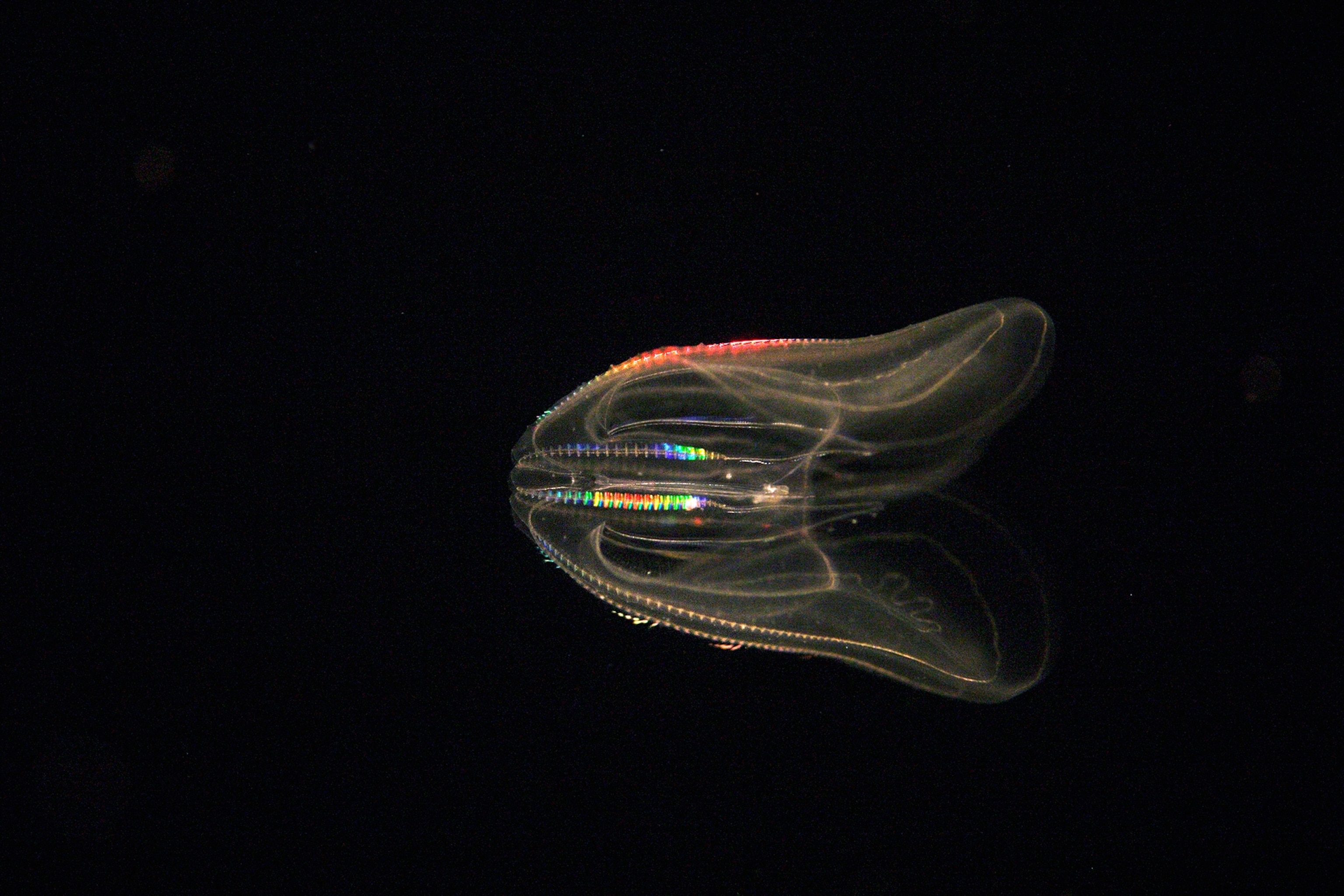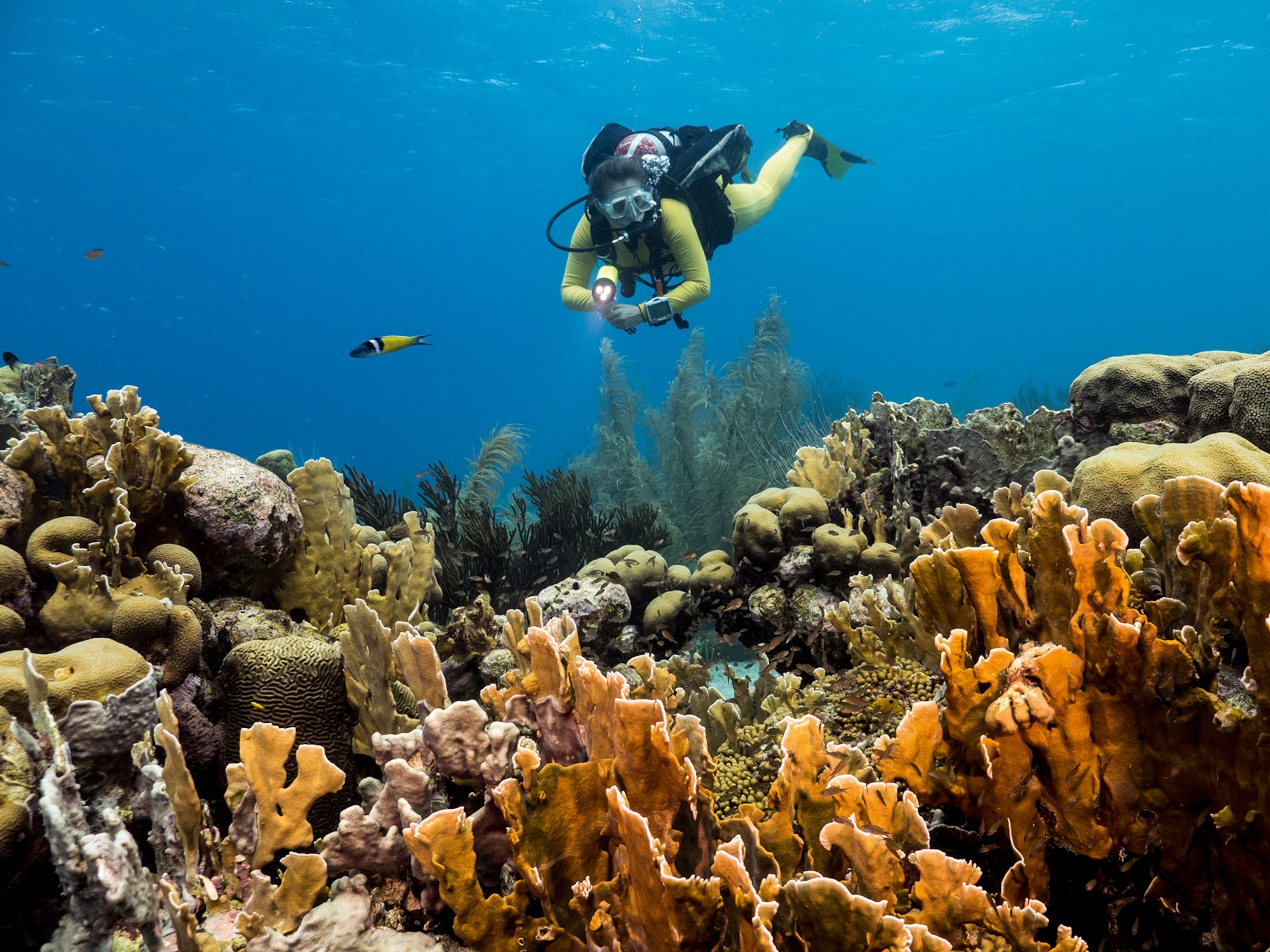If someone says “You’re glowing!” you may be in love. Or, more likely, you’re a marine animal.
A whopping 76 percent of ocean animals are bioluminescent, which means they produce their own light through a series of chemical reactions or host bacteria that do. (Read more about luminous life in National Geographic magazine.)
It’s a separate process from biofluorescence, in which blue light hits the surface of an animal and is reemitted as a different color, usually orange, red, or green.
Marine creatures rely on bioluminescence for communication, finding prey, camouflage, and more. It’s so important, in fact, that the trait has evolved 27 times among ray-finned fishes, a huge group that makes up half of all vertebrate species alive today.
Some terrestrial critters also glow; some famously, such as fireflies, and others more under the radar, like mushrooms or beetles.
Who glows?
At least 1,500 species of fish are known to be bioluminescent, including sharks and dragonfish—and scientists regularly discover new ones.
Among the most iconic are deep-sea fishes like the anglerfish, whose females sport a lure of glowing flesh that acts as bait for any prey close enough to be snatched.
Hawaiian bobtail squid light up via bioluminescent bacteria living in one of their organs; the light camouflages them against moonlight on the surface and eliminates their shadow, obscuring them from predators. (Read about nature’s living fireworks—animals that bioluminesce.)
If you shine a light on a comb jelly, light refracted off its moving cilia might be mistaken for bioluminescence.
Their true bioluminescence cannot be seen in light, says marine biologist Edie Widder, founder of the Ocean Research and Conservation Association. Their real bioluminescence comes from light-producing chemicals which different species use in different ways, such as flashing the chemicals to deter predators.
Then there’s the world’s smallest shark, the six-inch lanternshark, which advertises its own goods via photophores (or light-producing organs) clustered around its reproductive organs.
Males and females are “strutting their stuff, showing where their stuff is,” says George Burgess, formerly of the Florida Museum of Natural History. Each species has a specific light pattern, “like a name tag,” so they can find mates in the dark ocean depths, he adds.
Why don’t freshwater animals glow?
The reason is simple: “Very few bioluminescent fish can tolerate low salinity,” says marine biologist Edie Widder, founder of the Ocean Research and Conservation Association.
The only instance of bioluminescence in a freshwater animal is Latia neritoides, a limpet-like snail native to New Zealand streams, where it emits a glowing slime when bothered.
Where to see glowing animals

Bioluminescent marine plankton really put on a show.
Some species of dinoflagellates light up using a similar to chemical reaction to that of fireflies; both use a naturally occurring molecule called luciferin, named for Lucifer, the light-bearer. (Read how fireflies glow.)
Millions of these one-celled organisms create a beautiful shimmering effect, particularly when there’s little moonlight; in Puerto Rico, tourists can kayak through the undulating, electric blue water of three bioluminescent bays.
Movement stimulates the dinoflagellates, so if a fish happens to swim through the water, “you would expect to see [its] luminescent outline,” says Senjie Lin, a marine biologist at the University of Connecticut who specializes in these plankton. (Visit these eight incredible bioluminescent phenomena around the world.)
The plankton’s glow is usually blue, “but when it is intense, it can look like white to human eyes,” Lin adds.
And if you happen to be in Australia or New Zealand, you can visit caves of glowworms—actually the larvae of a small fly, Arachnocampa flava—that dangle sticky bioluminescent threads to lure and capture unlucky prey.






